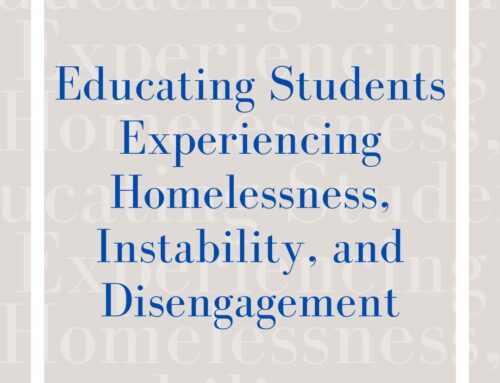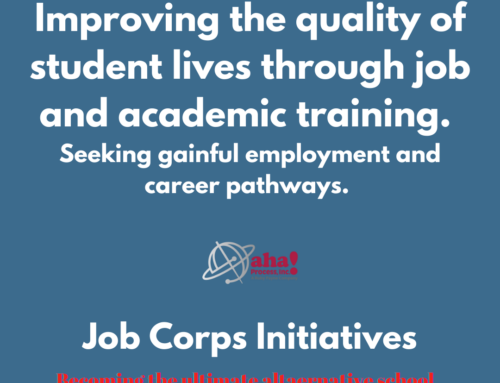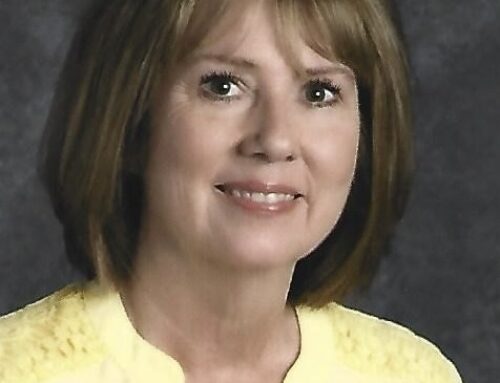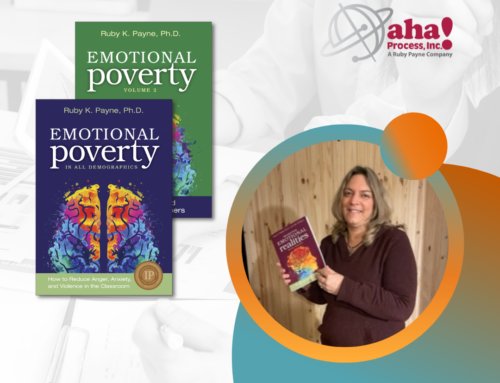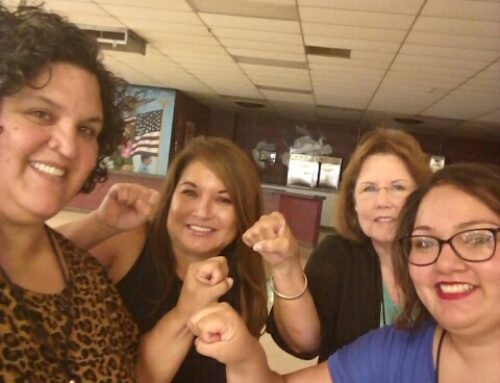After the aha! Process training, I felt I was better at helping students navigate our school system. In particular, looking at programs for at-risk students. I am reminded of a student, “Vicente,” who was having trouble with a teacher, “Mrs. Medrano.” He was disruptive in her class and refused to do his work. He told me, “I hate her class!” I suspected he didn’t understand the material but didn’t want to admit it. I tried to speak with Mrs. Medrano and Vicente’s mother but, for various reasons, the adults were not willing to help Vicente solve this problem.
I sat him down and told him honestly how I saw the problem. He would fail the class if he did not start getting help and changing his behavior. He could choose to fail, as long as he understood the consequences of that decision. He said he wanted to try again. We started with his language. I explained aha! Process’s analogy of different rules for different settings. I told him there are different language rules for school, and if he wants to succeed, he needs to try to use school words. He used to say to Mrs. Medrano, “Whazup?” and she would correct him. I told him to start by saying to Mrs. Medrano, “Good morning” when he saw her. He told me, “I’m not feeling it, Miss.” I asked him just to try it anyway.
Working from another aha! Process strategy, I asked him if it felt dishonest to be kind to someone he did not like. He laughed and said, “Yes!” However, he agreed that even though he didn’t like her and it felt dishonest, he’d try being nice to Mrs. Medrano. He did these two things, and Mrs. Medrano started being kinder to him. This, in turn, led to him liking her more and being willing to ask for help. He ended up passing the class with a C and no more referrals. Mrs. Medrano came to like him and remarked to me about the change in him. One day she even surprised him by saying “Whazup?” to him on his way into class. Vicente felt that she was trying to understand him as well. I believe this illustrates ways in which aha! Process’s work shows teachers how to help students understand what is expected of them by the middle class environment of school.
The story of Vicente demonstrates that when teachers honor and support different styles of learning and different languages in their classrooms, they are also modeling for students how to view those different from us. aha! Process provides a framework for teachers to see their students’ ways as different, not worse from their own. Students learn simply by watching teachers react to situations in class. So many times I hear statements similar to, “These kids can’t read (write, do math, etc.),” or, “These parents don’t care.” It seems to me that this takes away part of the humanness of a group. When we recognize that all humans have the capacity for love, learning, and belonging to a group, we can see ourselves in the “other.” It is a teacher’s job to foster this. aha! Process techniques help with this by helping teachers to see that students may be viewing the world through different, not worse, sets of rules.
Carrie Olson is currently pursuing her doctorate in curriculum and instruction at the University of Denver.


